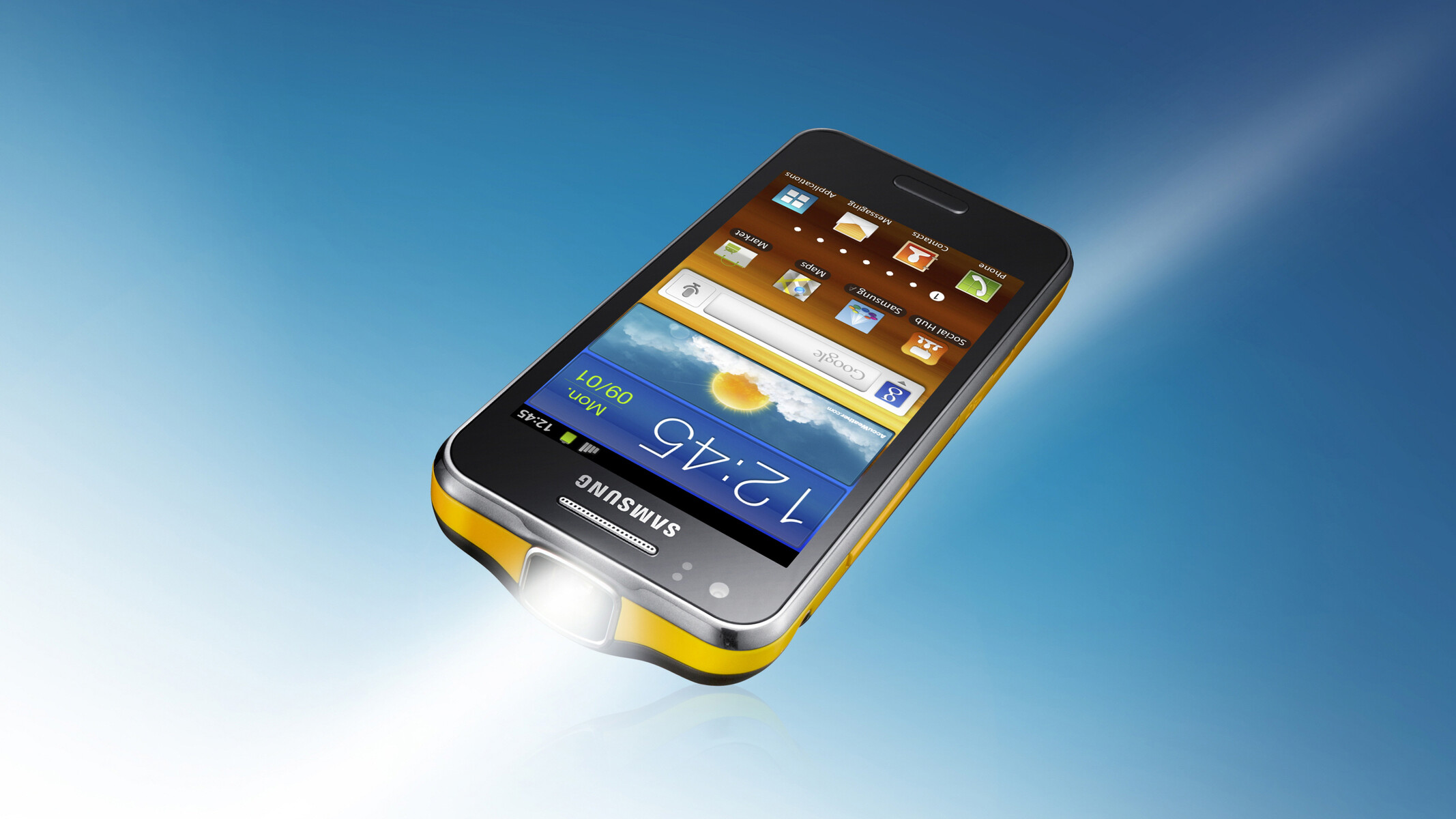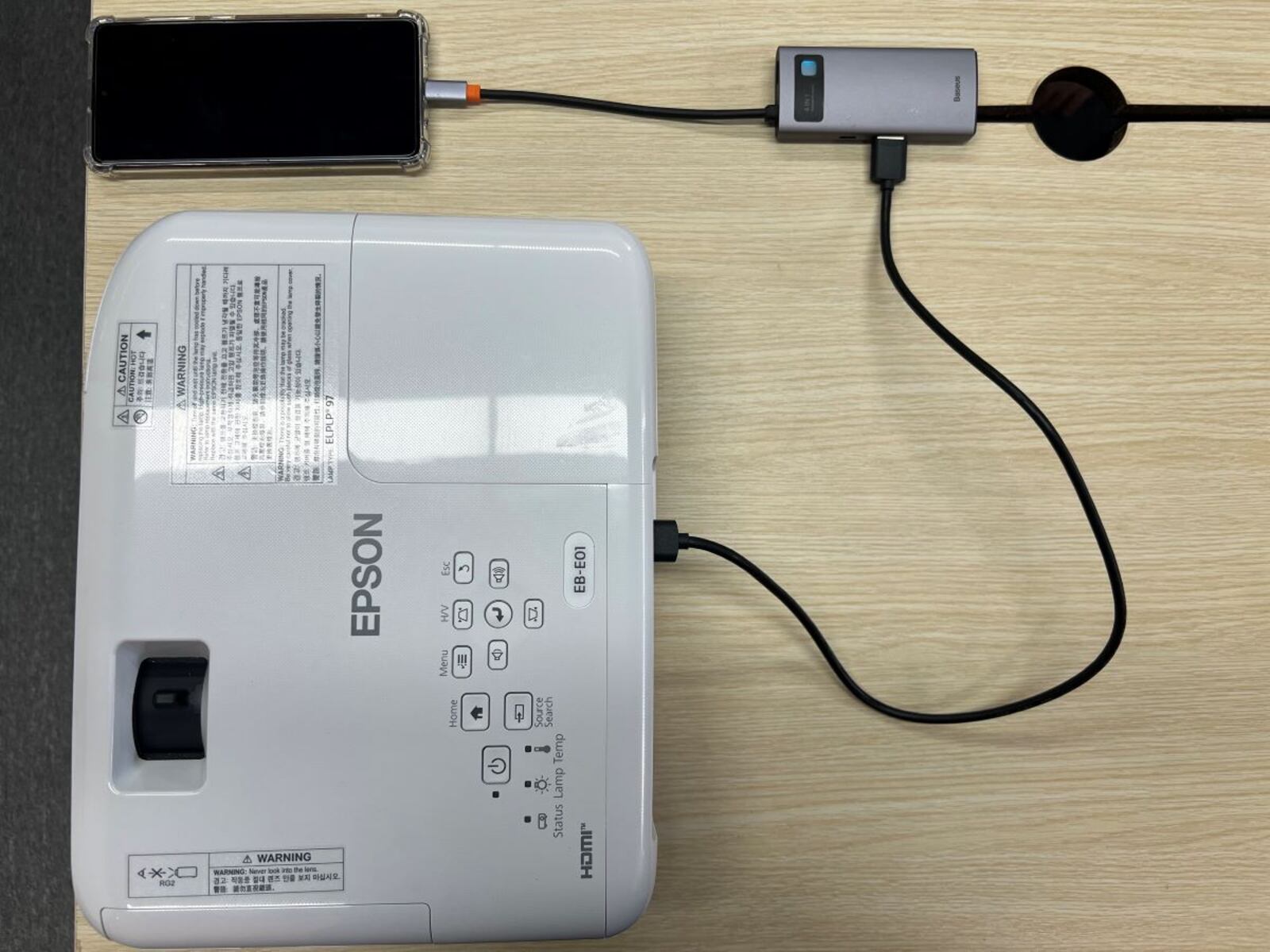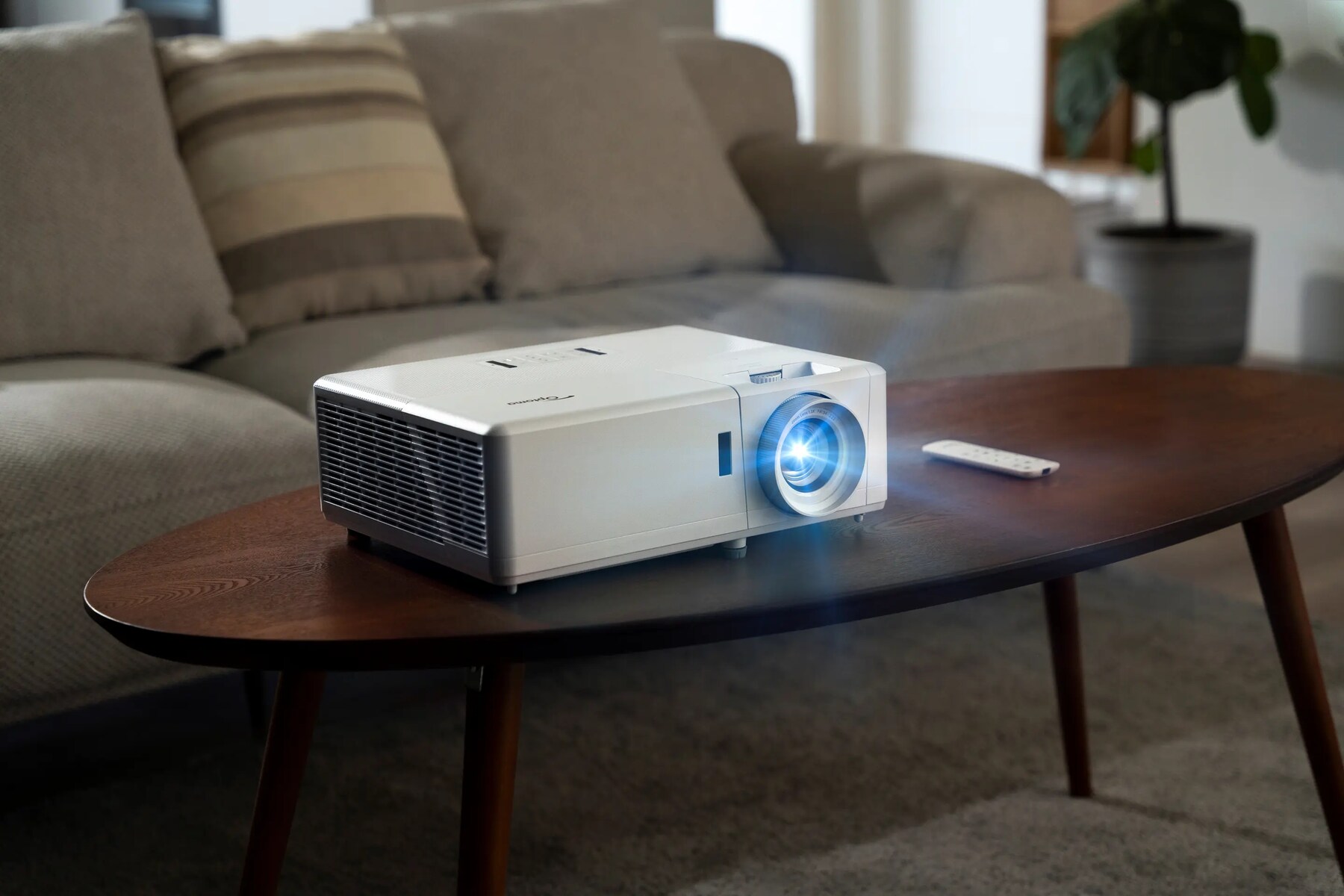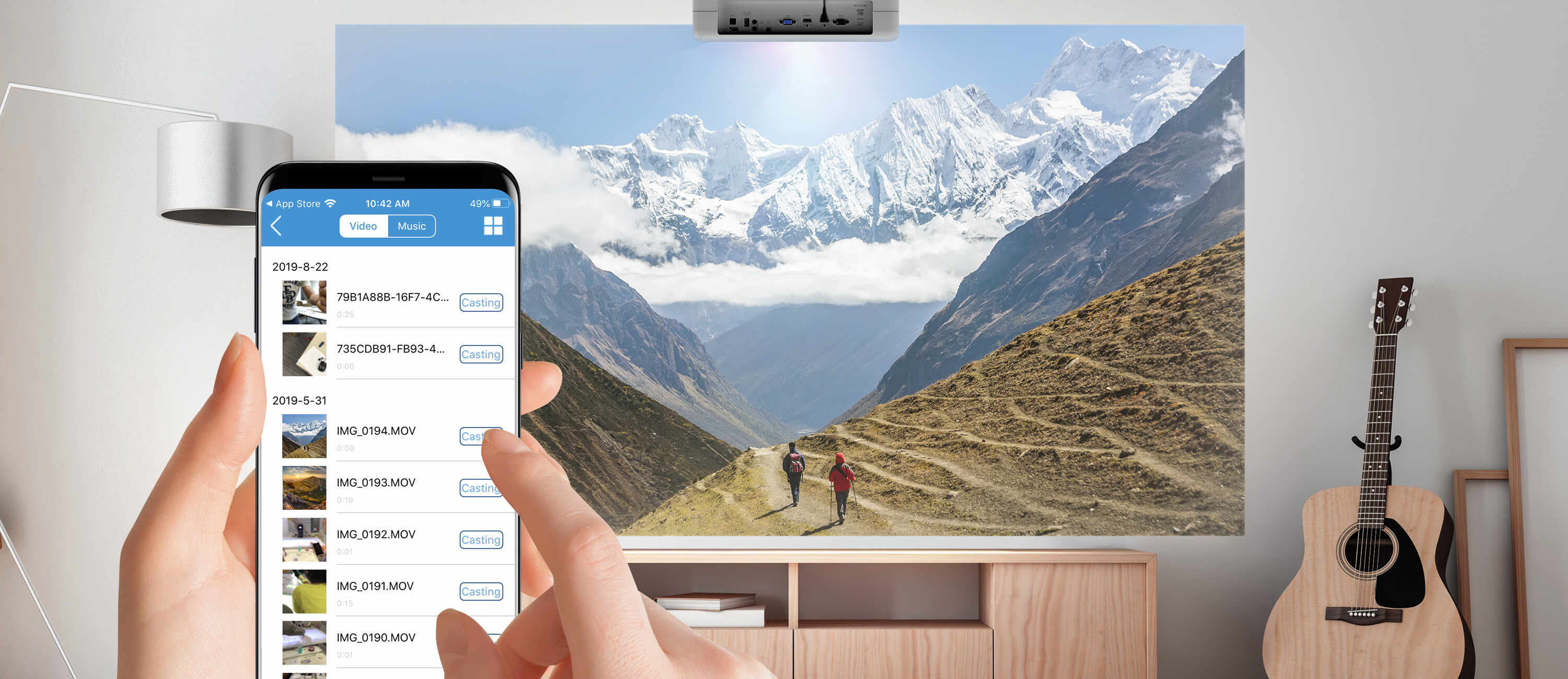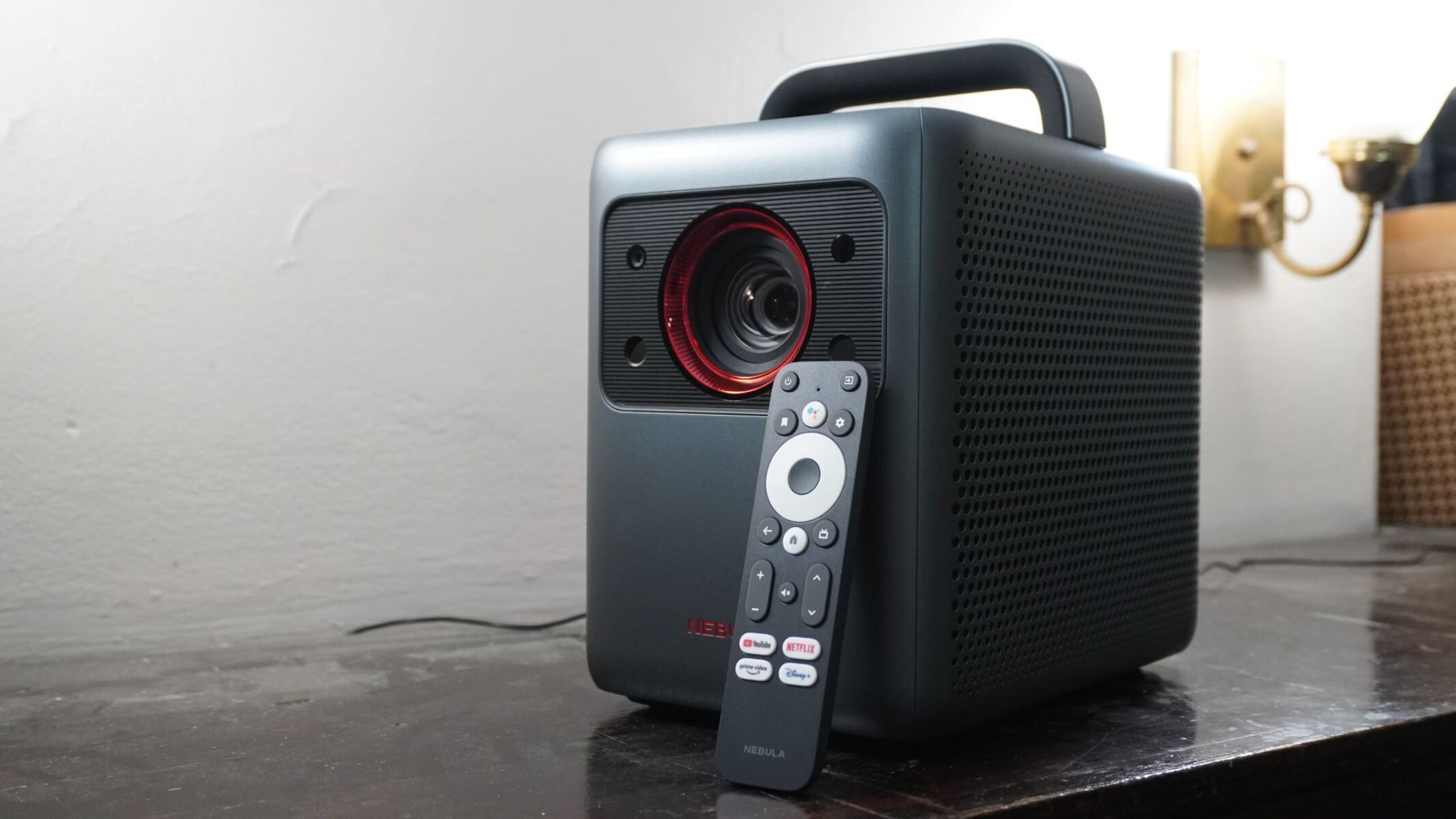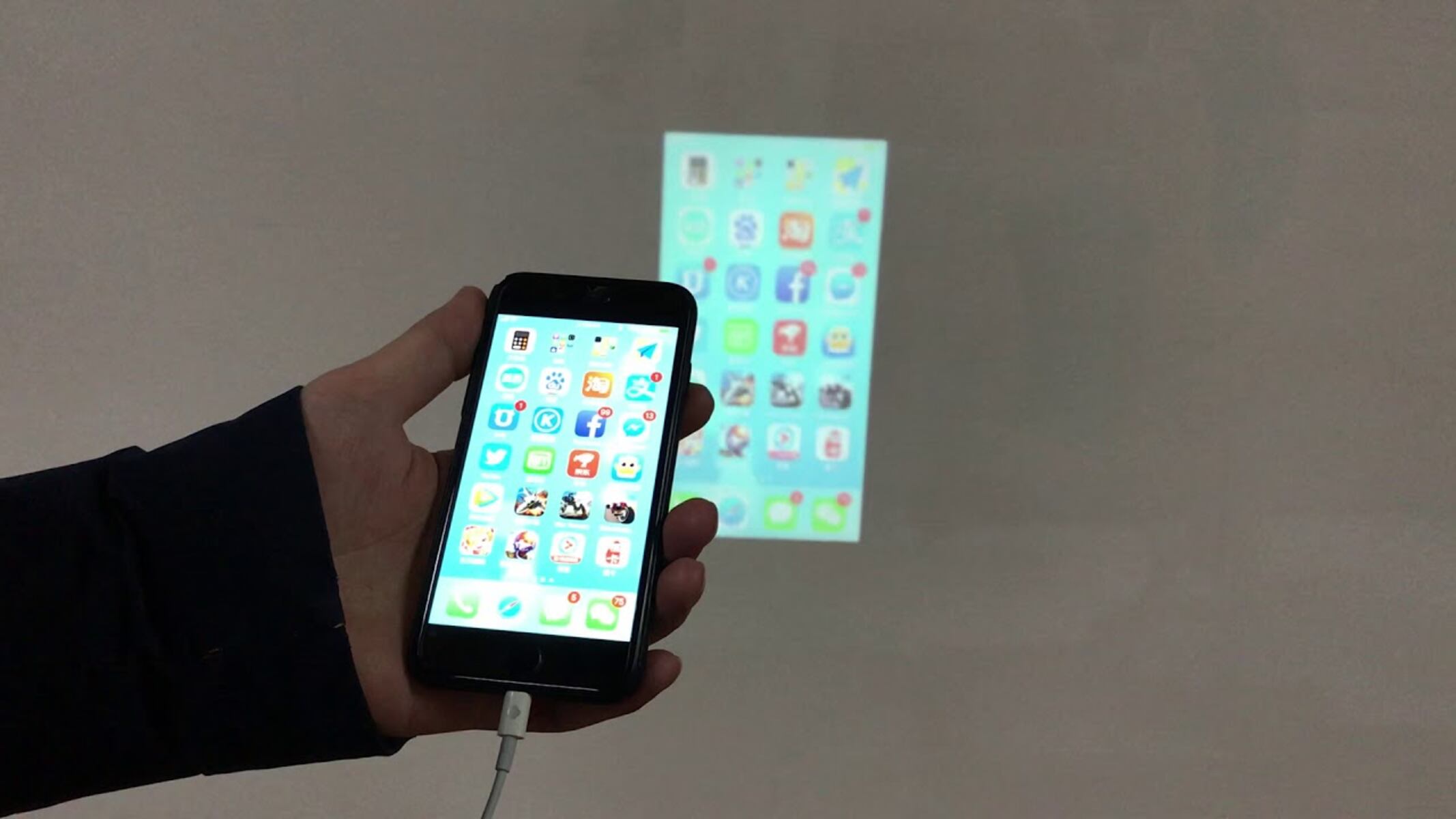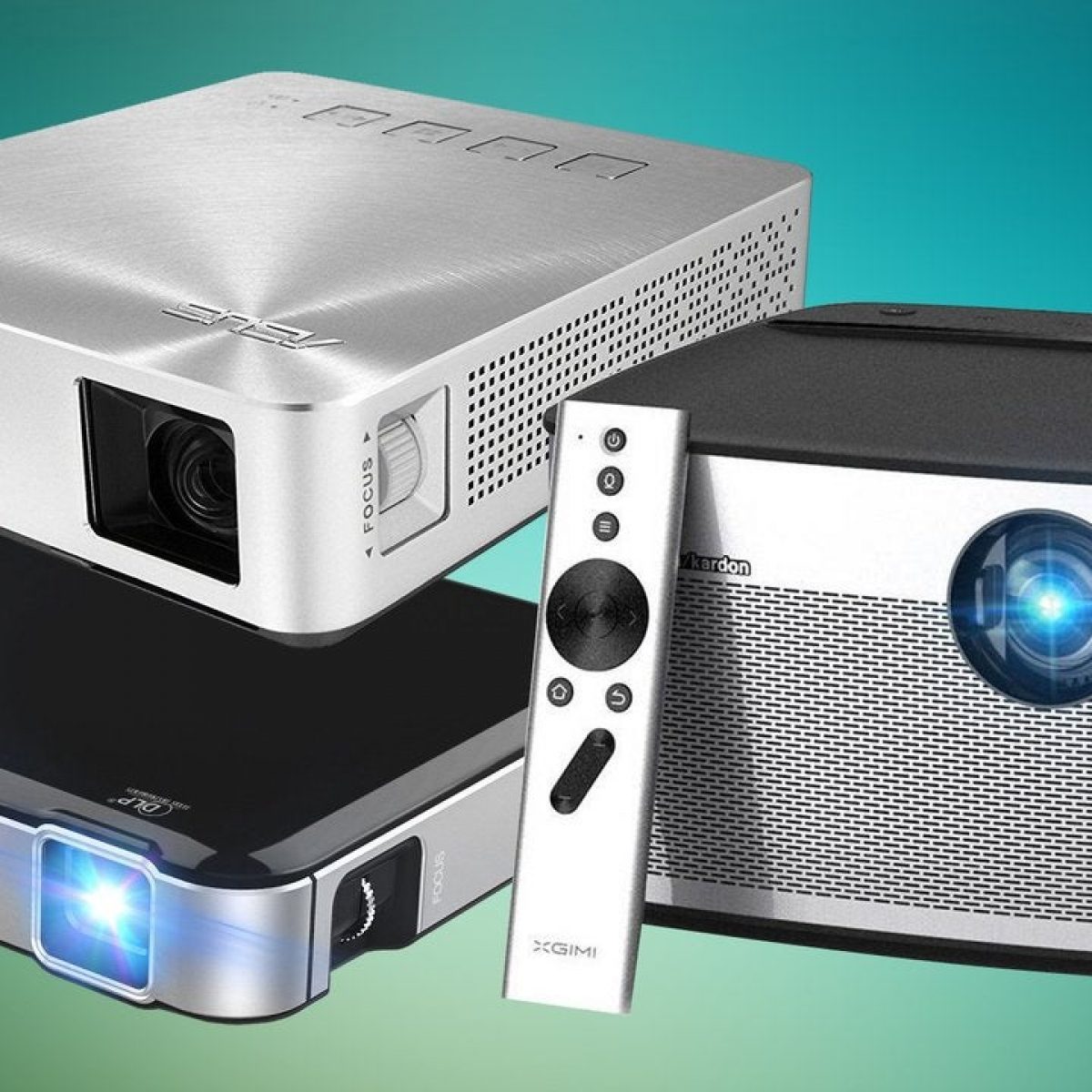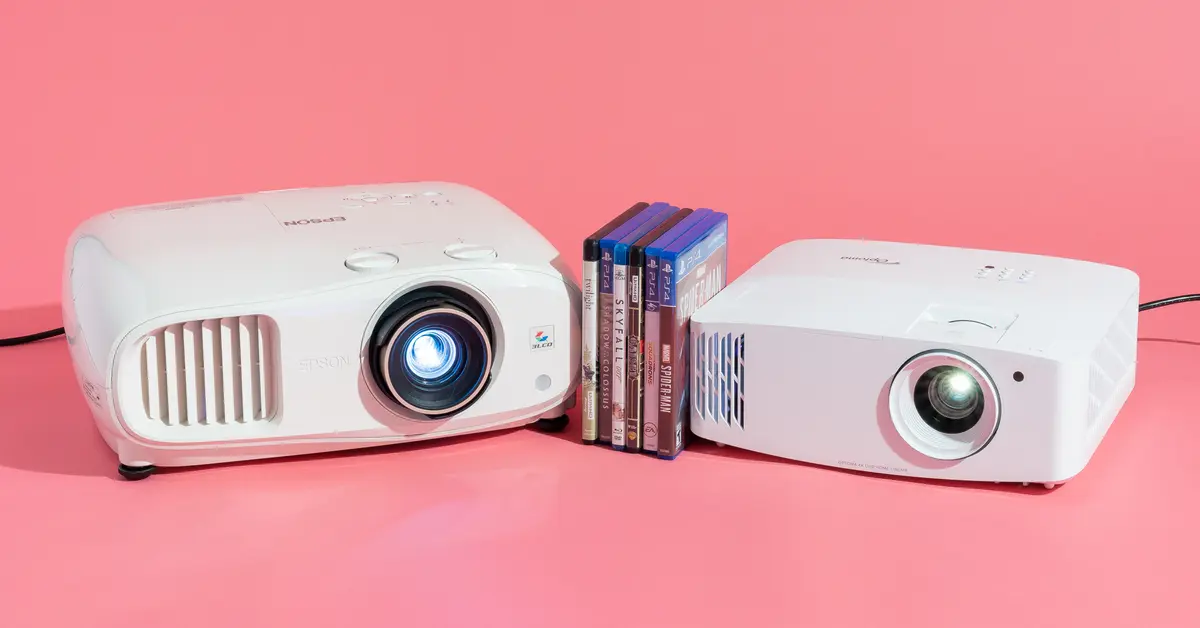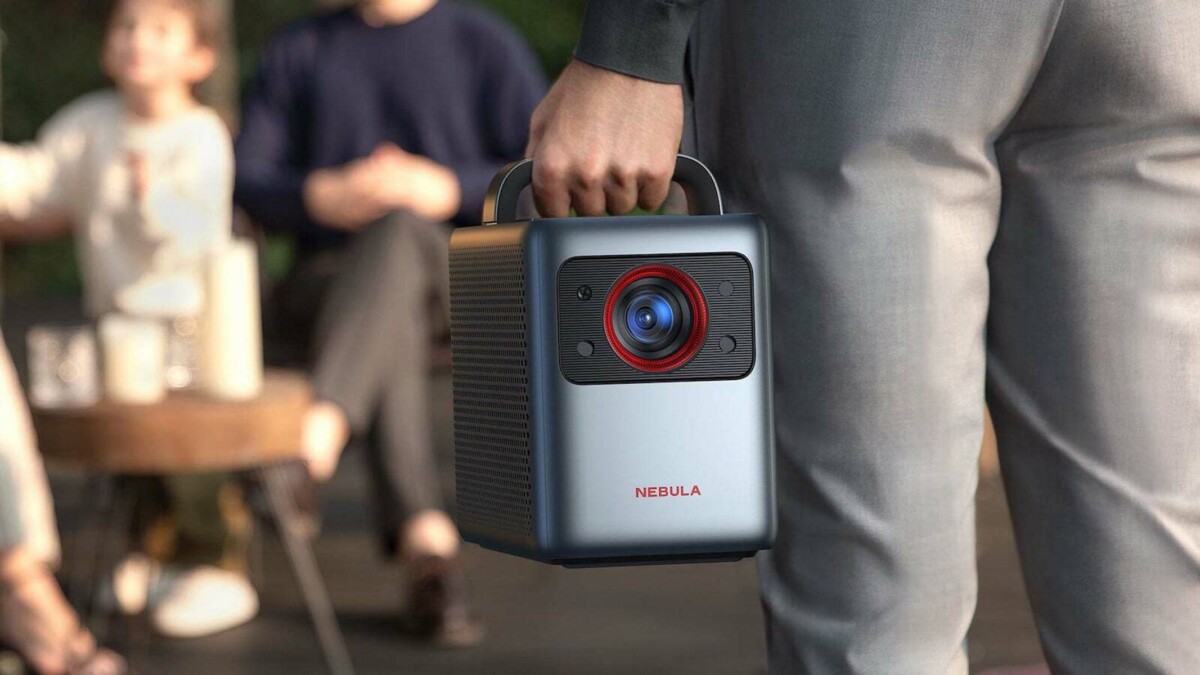Supplies Needed
Creating your very own smartphone projector is a fun and rewarding DIY project that requires just a few simple supplies. Before you get started, make sure you have the following items on hand:
- A Cardboard Box: Look for a sturdy cardboard box that is large enough to accommodate the size of your smartphone. This will serve as the main body of your projector.
- A Magnifying Lens: You will need a magnifying lens with a focal length of around 100mm. This can be obtained from an old magnifying glass or purchased separately from a craft or hobby store.
- A Cutter or Scissors: You will need a cutter or scissors to cut out holes in the cardboard box for the lens and the smartphone to fit into.
- A Ruler and Pencil: These tools will come in handy for measuring and marking the precise locations for the holes.
- Black Construction Paper or Spray Paint: To enhance the projection quality, it is recommended to line the inside of the box with black construction paper or spray paint. This will help to minimize any unwanted light reflections.
- Double-Sided Tape or Glue: You will need either double-sided tape or glue to secure the magnifying lens and smartphone in place.
- A Tripod or Stand (optional): While not necessary, having a tripod or stand to hold your projector can make it easier to adjust the angle and position for optimal viewing.
With these supplies at your disposal, you will be well-equipped to begin constructing your own smartphone projector. Remember to gather all the necessary materials before diving into the project to ensure a smooth and hassle-free experience. Now, it’s time to move on to the next step, where we will guide you through the process of constructing the phone projector.
Step 1: Gather Your Materials
Before embarking on your journey to transform your phone into a projector, it’s essential to gather all the materials you’ll need. By having everything prepared, you can streamline the process and avoid unnecessary interruptions. Here’s what you’ll need:
- A Cardboard Box: Look for a sturdy cardboard box that is large enough to accommodate the size of your smartphone. This will serve as the main body of your projector.
- A Magnifying Lens: You will need a magnifying lens with a focal length of around 100mm. This can be obtained from an old magnifying glass or purchased separately from a craft or hobby store.
- A Cutter or Scissors: You will need a cutter or scissors to cut out holes in the cardboard box for the lens and the smartphone to fit into.
- A Ruler and Pencil: These tools will come in handy for measuring and marking the precise locations for the holes.
- Black Construction Paper or Spray Paint: To enhance the projection quality, it is recommended to line the inside of the box with black construction paper or spray paint. This will help to minimize any unwanted light reflections.
- Double-Sided Tape or Glue: You will need either double-sided tape or glue to secure the magnifying lens and smartphone in place.
- A Tripod or Stand (optional): While not necessary, having a tripod or stand to hold your projector can make it easier to adjust the angle and position for optimal viewing.
Prioritize finding a cardboard box that can comfortably house your smartphone and a magnifying lens. The quality of the lens is crucial for achieving a clear and sharp projection. If you don’t have an old magnifying glass, consider purchasing one that meets the required specifications. Additionally, ensure that you have the necessary cutting tools, such as scissors or a cutter, to create holes in the cardboard box for the lens and smartphone.
Black construction paper or spray paint will help minimize unwanted reflections inside the box, resulting in a more vibrant and immersive projection. Lastly, double-sided tape or glue will come in handy for securely positioning the lens and smartphone within the box. If you have a tripod or stand available, it can make it easier to adjust the projector’s angle and position for comfortable viewing.
With all your materials gathered, you’re ready to move on to the next step: constructing the phone projector. Stay tuned for the detailed instructions in the upcoming section!
Step 2: Construct the Phone Projector
Now that you have all the required materials, it’s time to put your DIY skills to work and construct your very own phone projector. Follow these step-by-step instructions to bring your projector to life:
- Start by taking the cardboard box and removing any flaps or unnecessary parts. You want to create a clean and open space inside the box.
- Using a ruler and pencil, measure and mark the location for the lens on one side of the box. Make sure the hole is slightly smaller than the size of the lens to ensure a snug fit.
- Using a cutter or scissors, carefully cut out the hole for the lens. Take your time and make precise cuts to achieve a clean result.
- If desired, line the inside of the box with black construction paper or use black spray paint to minimize any internal reflections. This will enhance the quality of your projected image.
- Next, measure your smartphone’s dimensions and mark the spot where it will be placed inside the box. Ensure it is aligned with the lens hole for proper projection.
- Create a slot or cutout for the smartphone to rest securely in place. The slot should be wide enough to accommodate your device but snug enough to hold it firmly.
- Insert the magnifying lens into the hole you created earlier, securing it in place with double-sided tape or glue if needed. Ensure that the lens is positioned at the correct distance from the smartphone screen for optimal focus.
- Test the position of your smartphone by placing it in the slot you created. Adjust the angle and position if necessary to ensure the projected image is straight and aligned.
- Once you are satisfied with the positioning, secure the smartphone in place with double-sided tape or by gluing down any flaps or edges of the box around it.
- Double-check that everything is securely fastened, and your phone projector is ready for use!
With these simple steps, you have successfully constructed your own phone projector. Take a moment to admire your handiwork before moving on to the next step: preparing your phone for projection. Stay tuned for the detailed instructions in the upcoming section!
Step 3: Prepare Your Phone
Now that you have constructed your phone projector, it’s time to prepare your phone for projection. Follow these steps to ensure your phone is optimized for the best viewing experience:
- Start by adjusting the brightness and screen timeout settings on your phone. To optimize the projection quality and conserve battery life, increase the screen brightness to its maximum level and set the screen timeout to a longer duration.
- Next, enable the “Do Not Disturb” mode or turn off any notifications that might interrupt your viewing experience. This will ensure that you can enjoy your content without any interruptions or distractions.
- If possible, switch your phone to airplane mode or disable any wireless connections that are not essential for projecting your content. This will help minimize any interference or distractions that may affect the projection quality.
- Orient your phone in landscape mode to maximize the projected image size. Most videos and media content are formatted for landscape orientation, so this will help ensure that your content fills the entire projection area.
- Before placing your phone in the projector, make sure the screen is clean and free from any smudges or dirt. A clean screen will provide a clearer and more vibrant projected image.
- Once your phone is prepared, carefully slide it into the slot or cutout you created in the cardboard box. Ensure that the screen is aligned with the lens hole for optimal projection.
- Adjust the position and angle of your phone as needed to align the projected image properly. You can tilt and shift the phone within the slot to achieve the desired projection orientation.
- Double-check that your phone is secured in place and that the lens is positioned correctly for clear focus. Make any necessary adjustments to achieve the best possible image quality.
- Now, with your phone prepared and properly positioned, you are ready to move on to the next step: adjusting the lens. Stay tuned for the detailed instructions in the upcoming section!
By following these steps, you will ensure that your phone is optimized for projection, allowing you to fully enjoy your favorite movies, videos, and more on the big screen. With your phone prepared, it’s time to move on to the next step and fine-tune the projection settings.+
Step 4: Adjust the Lens
Now that your phone is securely positioned within the projector, it’s time to fine-tune the lens to achieve the best possible projection quality. Follow these steps to adjust the lens:
- Start by turning on your phone and launching the content you want to project. It could be a movie, a video, or even a presentation.
- With the projection surface in front of you, move the projector and adjust its distance from the surface until you achieve the desired image size. Experiment with different distances to find the optimal size for your viewing preferences.
- Once you have determined the ideal distance, focus on the lens. Use the adjustment knobs, if available, to adjust the lens until the projected image becomes clear and sharp. If your lens does not have knobs, you can carefully move the lens back and forth to achieve focus.
- Take your time to fine-tune the focus until the projected image is crisp and well-defined. This step is crucial to ensure an enjoyable viewing experience.
- As you make adjustments, pay attention to the angles and orientation of the projector. Make sure it is level and aligned with the projection surface to avoid any distortions or skewed images.
- If necessary, adjust the brightness and contrast settings on your phone to optimize the projected image. Experiment with different settings until you achieve the desired picture quality.
- Continue to make subtle adjustments to the lens, distance, and focus until you are satisfied with the projected image quality. Take your time to fine-tune these settings for the best possible viewing experience.
Remember to periodically check the projected image’s clarity and adjust as needed, especially if you change the distance or position of the projector. By carefully adjusting the lens, you can enjoy a crisp and immersive projection that rivals a traditional screen.
Once you are satisfied with the projection settings, you are ready to move on to the next step: finding the perfect projection surface. Stay tuned for the detailed instructions in the upcoming section!
Step 5: Finding the Perfect Projection Surface
Now that you have adjusted the lens and fine-tuned the projection, it’s time to find the perfect surface to display your projected content. Follow these steps to ensure an optimal viewing experience:
- Assess the available surfaces in your viewing area. Look for a smooth, flat, and clean surface to project your content onto. Options may include a white wall, a projector screen, or even a large white sheet secured to a wall.
- Ensure that the chosen surface is at an appropriate height for comfortable viewing. It should be positioned at an angle that allows you to comfortably sit or stand while watching the projection.
- Remove any objects or obstacles that may obstruct the projected image or cast unwanted shadows on the surface. Clear the area to ensure a clear and uninterrupted viewing experience.
- If you are projecting onto a wall, make sure it is clean and free from any marks or imperfections that may affect the image quality. Consider using a fabric or paint specifically designed for projection surfaces to enhance the clarity and vibrancy of the projected image.
- If you are using a white sheet or other fabric, stretch it tightly to minimize wrinkles and ensure a smooth projection surface. Attach it securely to prevent any movement or sagging during viewing.
- Ensure that there is adequate lighting control in the area. Adjust the ambient lighting to achieve the desired contrast and brightness for optimal viewing. Dim the lights or use blackout curtains if needed to eliminate any unwanted glare or reflections.
- Test the projection on the chosen surface by playing different types of content, such as movies, videos, or images. Make any necessary adjustments to the positioning and angle of the projector to achieve the desired viewing experience.
- Once you are satisfied with the projection on the chosen surface, sit back, relax, and enjoy the show!
By finding the perfect projection surface, you can enhance the visual quality of your projected content and create a more immersive viewing experience. Take the time to carefully select and prepare the surface, ensuring that it meets your desired criteria for optimal projection results.
With the perfect projection surface set up, you are now ready to move on to the next step: adjusting the focus to achieve the clearest image. Keep reading for detailed instructions in the upcoming section!
Step 6: Adjust the Focus
Once you have set up the projector and found the perfect projection surface, it’s time to fine-tune the focus to ensure a clear and sharp image. Follow these steps to adjust the focus of your phone projector:
- Start by playing a test image or video on your phone. Choose something with a variety of details and colors to accurately assess the focus quality.
- Move closer or farther away from the projection surface until the image appears on the desired area. Use the focus knobs or adjustments, if available, to manipulate the projection focus.
- If your projector doesn’t have focus knobs, gently move the phone forward or backward within the slot to achieve the optimal focus point.
- Pay attention to the edges of the projected image. Adjust the focus until the entire image, including the corners, is clear and in focus.
- Take note of any blurriness or distortion in the projected image. Adjust the focus as needed to minimize these issues and create a crisp and sharp projection.
- If necessary, adjust the brightness and contrast settings on your phone to ensure the best possible image quality. Experiment with different settings to enhance the clarity and vibrancy of the projected content.
- Continuously fine-tune the focus until you are satisfied with the clarity and sharpness of the projected image. Take your time to ensure the best viewing experience.
- Step back and view the projection from different angles and distances to confirm that the focus remains consistent across the entire projected image.
- Make any necessary adjustments to the focus, as well as the position of the projector, until you achieve the desired picture quality.
By adjusting the focus of your phone projector, you can ensure that your projected images and videos are sharp, clear, and visually appealing. Take the time to experiment with different focus settings until you achieve the best results.
Congratulations! With the focus adjusted, you are now ready to move on to the optional step of connecting external speakers for an enhanced audio experience. Stay tuned for more information in the upcoming section!
Step 7: Connect External Speakers (optional)
If you want to further enhance your viewing experience, you have the option to connect external speakers to your phone projector. By doing so, you can enjoy high-quality audio that complements the stunning visuals. Follow these steps to connect external speakers:
- Determine the type of audio output available on your phone. Common options include a 3.5mm audio jack, Bluetooth, or USB-C connectivity.
- Choose the appropriate external speakers that are compatible with your phone’s audio output. This can include portable Bluetooth speakers, wired speakers, or even a soundbar.
- Ensure the speakers are powered and ready for use. Charge the batteries if necessary or connect them to a power source.
- If you’re using wired speakers, connect one end of the audio cable to the speakers and the other end to the audio output on your phone.
- If you’re using Bluetooth speakers, enable the Bluetooth function on your phone and put the speakers in pairing mode. Connect your phone to the speakers by selecting them from the available devices list in your phone’s Bluetooth settings.
- For USB-C connectivity, use an appropriate adaptor or cable to connect your phone to the speakers. Ensure the speakers are recognized by your phone.
- Once the external speakers are connected, adjust the volume levels on both your phone and the speakers to achieve a comfortable and balanced audio output.
- Test the audio by playing a video or music on your phone. Make any necessary adjustments to the sound settings, such as bass or treble, to achieve your desired audio quality.
- Position the speakers in an optimal location that complements the projection setup. Consider placing them on either side of the projection surface or directly below the screen for a more immersive audio experience.
- Sit back, relax, and enjoy your favorite content with enhanced audio quality!
Connecting external speakers is an optional step but can greatly enhance your overall viewing experience. With clear and powerful audio accompanying the projected visuals, you can immerse yourself fully in the content you’re watching, whether it’s a movie, a video, or a presentation.
Now that you’ve learned how to connect external speakers, you’re all set to enjoy your homemade phone projector to its fullest potential. In the next step, we will conclude with some final thoughts and tips for an even better experience. Keep reading for more information!
Step 8: Enjoy Your Homemade Phone Projector
Congratulations! You have successfully created your very own homemade phone projector. Now it’s time to sit back, relax, and enjoy the fruits of your labor. Follow these final tips to make the most out of your projector:
- Choose a dark or dimly lit room for the best projection quality. This will help minimize any unwanted ambient light that can affect the visibility and clarity of the projected image.
- Ensure that your phone is fully charged or connected to a power source to prevent interruptions during your viewing session.
- Explore different content options, including movies, TV shows, videos, and presentations. With your phone projector, you have a big screen at your disposal, so take advantage of it!
- Experiment with different projection surfaces and distances to find the setup that suits your preference. You can project onto walls, screens, or even outdoor surfaces for a unique experience.
- Engage in a comfortable seating arrangement that allows you to relax and fully immerse yourself in the projected content.
- Consider inviting friends and family over to share the excitement of your homemade projector. It’s a great way to enjoy movies and entertainment together.
- Regularly clean the lens of your projector to maintain optimum projection quality. Dust and smudges can affect the clarity of the image, so keep it clean for a sharp and vibrant display.
- Experiment with different audio setups to further enhance your viewing experience. Connect additional speakers or even a surround sound system for a truly immersive audio journey.
- Remember to take breaks and give your eyes some rest. Prolonged viewing may cause eye strain, so take short intervals to relax your eyes.
- Lastly, have fun and embrace the unique experience of your homemade phone projector. It’s a testament to your creativity and can provide hours of entertainment.
By following these tips, you can maximize your enjoyment and create memorable experiences with your homemade phone projector. Explore different content, experiment with various setups, and make the most out of this DIY creation.
Thank you for joining us on this DIY journey to turn your phone into a projector. We hope you have enjoyed the process and are now ready to embrace a whole new world of entertainment in the comfort of your home. Happy projecting!







